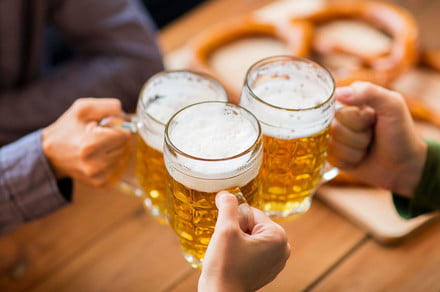The big dreams surrounding genetic engineering involve curing deadly diseases, saving the world’s coral reefs, and creating a limitless supply of lifesaving transplant organs. But, more importantly, could it also help keep beer fresher for longer? (Note: Your mileage of “more important” may vary.)
This latter vision is the work of scientists in China. In a recent paper, published in the American Chemical Society’s Journal of Agriculture and Food Chemistry, the scientists describe a new approach to engineering lager yeast so that it retains a stable flavor for longer. It means that, potentially, bottled beers could avoid picking up the “stale” flavor that they currently do within a year of being bottled.
Their approach involves modifying lager yeast so that it produces more of a molecule called NADH, which boosts the activities of natural yeast enzymes. They were able to identify four genes that increased NADH levels. The results produced up to 47% fewer aldehydes, an organic compound that is formed by the oxidation of alcohols. It also produced more sulfur dioxide, an antioxidant which protects beer against going stale. Flavors were changed only marginally, although hopefully this could be accounted for if this technique is ever commercialized. The beer’s fragrance was unchanged.
“Flavor stability is a significant concern to brewers as the staling compounds impart unpleasant flavor to beer,” the researchers write in their paper’s abstract. “Thus, yeasts with anti-staling ability have been engineered to produce beer with improved flavor stability. Here, we proposed that increasing the NADH availability of yeast could improve the flavor stability of beer. By engineering endogenous pathways, we obtained an array of yeast strains with higher reducing activity. Then we carried out beer fermentation with these strains and found that the anti-staling capacities of the beer samples were improved.”
It’s not clear whether the researchers plan to market this approach. If they do, it could result in beer that enjoys a longer shelf life without going bad. It still won’t mean beer that improves over time like wine. But it’s certainly a step (make that a hops) in the right direction.
The paper describing the work is titled “Higher NADH availability of lager yeast increases the flavor stability of beer.”

